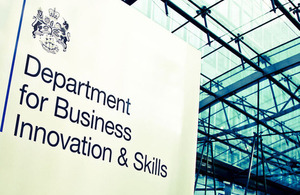Business Secretary and Chair of UK Steel hold first meeting of new joint Steel Council
The Business Secretary has brought together industry, unions, UK government and ministers from the devolved administrations to map the steel sector’s long-term future.

The high-level Steel Council builds on the work of the ministerial working groups which focused on addressing the immediate, pressing issues faced by the industry.
As a result, the UK government was able to deliver on energy costs, government procurement and EU emissions regulations. There remain global challenges creating severe pressure and the UK government is lobbying the EU to put the steel industry on a level playing field.
Business Secretary Sajid Javid said:
The crisis facing the British steel industry and workers is grave indeed. But people should be in no doubt that this government has done, and will continue to do, everything that is possible to secure the future of British steel making and protect Britain’s wider economy. That includes working more closely than ever with the industry in the new joint Steel Council.
Co-chair Jon Bolton of UK Steel said:
It is a welcome step that the government is continuing to respond to the needs of the UK steel sector and has acted on calls for a longer term, business-focused Steel Council.
The business leaders on the council represent many of the UK’s producers and will be well placed to determine what steps are needed to develop and support a steel sector enabling it to meet the future UK industrial and infrastructure demands.
Action taken by government
Energy costs
On 17 December we secured state aid clearance to pay further compensation to energy intensive industries (EIIs) - including steel - for renewable policy costs. This comes on top of the compensation we have already been paying to EIIs, including over £50 million to steelmakers to date.
In the Autumn Statement we announced that we would exempt EIIs from renewable policy costs.
Further information on relief for EIIs has been published (19 January 2016).
EU Industrial Emissions Directives
We have secured the longer lead-in times for compliance the industry asked for, which will save millions of pounds. Read the press notice (27 October 2015).
Anti-dumping
In July and again in November last year, we voted in favour of anti-dumping measures on the imports of certain steel products.
It was the UK that lobbied successfully, in support of industry calls, for an EU investigation into cheap imports of reinforcing steel bar.
We requested and secured an extraordinary meeting of the EU’s Competitiveness Council and where there is clear evidence, agreed faster action on dumping and EU action in the past month shows they have listened.
Read the statement on the UK’s contribution to EU action on steel (11 February 2016).
Procurement
We have published and further updated guidance for government departments, allowing considerations such as social impacts, job impacts and staff safety, so that the true value of UK steel can be taken into account. We are the first country in the EU to take advantage of and implement these new flexibilities.
Projects which have used UK steel:
- the Elizabeth line - the biggest construction project anywhere in Europe - we’ve built 26 miles of tunnels under London, using almost exclusively British steel
- Intercity Express Programme - 2,000 tonnes of British steel were used to build the frame for the brand new £82 million Hitachi Rail factory at Newton Aycliffe which will support introduction of the transformational new intercity express programme train fleet
- Network Rail - 98% of the 20,000 miles of rail track ordered by Network Rail comes from the Tata Steel plant at Scunthorpe
- UK suppliers have provided significant quantities of steel for major defence equipment programmes – including a large majority of that used for the new Queen Elizabeth class aircraft carriers
Updates to this page
-
Updated procurement section
-
First published.